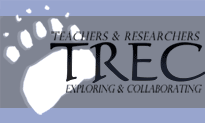 |
|
|
| Author |
Message |
Sandra_Geisbush
Joined: 23 Mar 2004
Posts: 64

|
 Posted:
Sat Aug 07, 2004 6:07 pm Posted:
Sat Aug 07, 2004 6:07 pm |
  |
Mike Schiff, Caleb's dad, asked some questions in a recent e-mail. As I responded to him, I realized that others might find his questions and my answers interesting. Hope so!
Mike asked:
What do you do for leisure? Mike is an avid fisherman and wanted to know about the fish in the area. Here is my answer . . .
You asked about what we do for relaxation. Generally, we sleep! We leave base camp early and arrive home with just about enough time to eat and then go to bed to rest up for the next day. Sometimes we meet in a little room where all our computers, resources, and supplies are set up. Here we play with the research that has been downloaded or captured during the day, watch presentations about how each individual is progressing with their research. Sometimes we meet briefly after dinner to discuss the events of the day and make plans for the day to come, but usually by morning those plans have morphed a few times due to weather, inclinations, etc. On occasion, if the day has not been totally taxing, some will play cards, others might study or read, and others might go into their rooms and talk a bit before falling asleep. We also see a lot of stretching and rubbing of sore muscles in the evening!
We do seem to eat a lot of fish. Most every day for breakfast we have different kinds of pickled herring and mackerel, thin slices of smoked salmon, and canned tuna. We prepare our lunches from what we have left over from breakfast, usually stuffing it between rather dense bread to take to the field. Because fish is easy to keep, smoked, pickled, frozen or in brine, and easy to transport, it becomes a staple at base camp. We also have had dishes with beef, lamb, chicken and pork on occasion for dinner, but fish is the constant. Tonight we are having fish soup!
Fishing is not a common activity on Svalbard. It is certainly not popular from the land, but there are fishing boats in the surrounding sea. Though not noted for fishing industry, Svalbard originally was recognized as a whale hunting region from as early as 1612. Whaling stations popped up throughout the islands, with the industry peaking around 1630, dominated by the Dutch. Whaling in the area was pretty much over by the mid 19th Century. You can dine on whale (some project participants did) at a restaurant in Longyearbyen, but it was most likely imported and not local!
The only fish in the island region is the Arctic Char (Salvelinus Albinus), a favorite of the Polar Bears. It is a relative of the salmon, and there are basically two types in the area. One lives in the fresh waters only and the other migrates to the sea during the summer. The Arctic Char is well adjusted to cold and nutrient-poor conditions, so it does OK here in Svalbard. A Char can weigh several kilograms. In the sea area around Svalbard, fishermen take Arctic Cod, mostly. The Mackerel and Herring come from other regions of Norway. The avid sports fisherman would likely be disappointed with the fishing in the region! Two commercial environmental researchers joined us for a few days at Isfjord. We shared our Zodiac and some other resources with them. They were studying the stationary Arctic Char in CongressVatnet or Lake Congress which is a smaller lake near Lake Linne. They were trapping the fish to examine them for the effects of Poly Chlorinated Biphenyl, commonly known of as PCBs. One would think that the problem of environmental pollutants would not have a profound effect in the Arctic, but Svalbard is in a unique position to reap the hazards of other industrialized nations. PCBs are actually brought to the area by ocean currents, and the North Atlantic Current ends near Svalbard. Other currents bring pollutants from European nations and Asia. The birds in the Svalbard area show increasing concentrations of PCBs, as do the fish, so this is something that environmentalists are watching closely. PCBs accumulate in the tissues of the fish and fowl with pathogenic (disease-causing) and teratogenic (birth defect-causing) effects. |
|
|
    |
 |
|
|
|
View next topic
View previous topic
You cannot post new topics in this forum
You cannot reply to topics in this forum
You cannot edit your posts in this forum
You cannot delete your posts in this forum
You cannot vote in polls in this forum
You cannot attach files in this forum
You can download files in this forum
|
Powered by phpBB 2.0.11
© 2001, 2002 phpBB Group :: FI Theme ::
All times are GMT
| |
